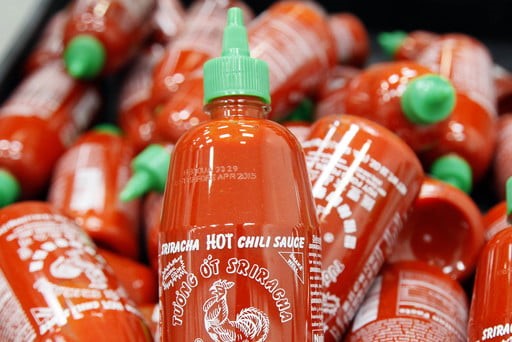War, a wobbly economy, the pandemic, and climate change seemingly stop at nothing. The resulting supply chain shortages have rippled through everything, causing major backlogs for things like appliances and lumber, and raising the prices for goods like bread and gas. It's disrupted our flow of champagne and now it's Sriracha's turn.
The culprit? Well, in the case of Sriracha, it's chili peppers. The company responsible for the iconic sauce, California-based Huy Fong, says it's not getting the number of peppers it needs. Those chili peppers come from the American southwest and Mexico, a region in the midst of a historic drought, which just set several temperature records earlier this month.
It's more of a nuisance, as we can certainly push on without the hot sauce. But part of Sriracha's appeal is its nimbleness. It's not like we are merely losing a trusty dipper to have while we watch playoff basketball or take in a Nicolas Cage movie. This is the sauce of all hours, enhancing everything from avocado toast in the morning to pizza for dinner.

What Does a Sriracha Shortage Mean?
In short, it's bad news for hot sauce enthusiasts. As the months unfold, consumers are likely to run into limited if not nonexistent Sriracha shelves at their local stores. Related spicy condiments will surely feel the heat, too, as stores will be unable to keep up with demand amid a particularly poor spring crop.
The folks at Huy Fong have their fingers crossed for a bumper crop come fall. In the meantime, we have to get through summer. That means some rationing, perhaps a little online wheeling and dealing with those who've hoarded the stuff, and if you're feeling extra motivated, making your own version of the sauce at home.
How to Make Sriracha
Granted, this recipe assumes you can get your paws on peppers, which are in high demand right now. Yet, depending on where you live or if you have access to your own garden or agricultural cooperative, you may be in luck. Here's a recipe from Food Fire Friends that mimics the beloved sauce. Don't forget to ration it while we wait on the next round of fresh peppers.
Prep Time: 5 minutes
Fermentation Time: 3-5 days
Yield: 8-12 servings
Step 1: Place the jalapeño and serrano peppers with the water, garlic, cayenne pepper, sugar, and lemon juice, and blend until smooth.
Step 2: Transfer the mixture into a large glass jar and let it cool in a dark place for three to five days, brushing down the sides with a spoon once a day. The mixture will begin to bubble and ferment. Make sure to rewrap the mixture after each scraping.
Step 3: Once the mixture is bubbly and has sat for three to five days, pour it back into the blender and blend it with vinegar until smooth. Discard the remaining pulp, seeds, and skin left in the strainer.
Step 4: Transfer the mixture into a small saucepan. Bring your sauce to a boil over medium heat and stir often for 5 to 10 minutes. The mixture will begin to thicken, so choose your desired thickness.
Step 5: Let the sauce cool to room temperature and it will continue to thicken. Transfer the sauce to jars and store them in the refrigerator for a few hours before serving.
Be Supply Savvy
While the shortage of the most popular hot sauce out there is causing waves, more will certainly follow. Let this be a wake-up call to start your own food preservation programs at home (pickling and sauces), preparing your place for much more real emergencies ahead, whether they're climate-related issues or otherwise.
There's no harm in having a lot of good nonperishables and related gear at the ready as we wait for the inevitable, whether that's a hurricane, earthquake, or shortage of a pantry staple like olive oil.
There will be shortages, but you can get through it all with a little extra work at home. Now that you know how to make one of the planet's most adored hot sauces, you've got the momentum to take on other condiments as well, should you need to. With some homemade Sriracha in your back pocket, you won't ever stray too far from that sweet, tangy, garlic-y goodness.



